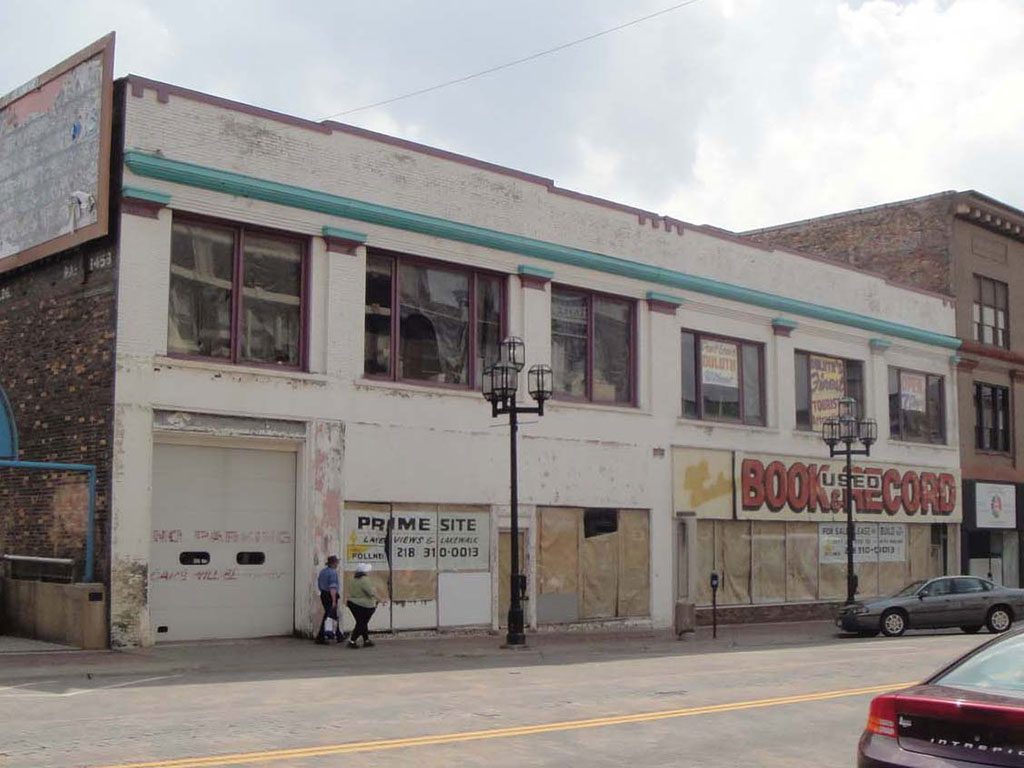
Even the least visually appealing properties have great potential to serve as economic engines in historic districts with effective outreach and purposefully designed programs.
First impressions are important, and the face of your downtown has a huge impact on perceptions. If a district looks well cared for and active, people see it as vibrant and prosperous, encouraging customers to shop and businesses to invest.
But vacant and poorly maintained properties give the impression of an area in decline. Districts with multiple poorly-maintained or chronically vacant properties often experience broader negative economic impacts. These impacts can range from decreasing property values to reduced foot traffic, which hurt adjacent properties and businesses.
Planning to address these ‘problem’ properties requires support and alignment from many community partners. It can take years to fully reverse what is often the result of decades of apathy and disinvestment.
Using short-term strategies and setting the stage for long-term revitalization will ultimately create a lively, welcoming downtown district. Here are some useful approaches to creating a better downtown:
Understanding problem properties
Before making plans to revitalize a property, it’s important to recognize that each building has an individual owner and a unique history that led to its current condition. Few property owners aspire to own underperforming properties, and approaching the situation from a place of understanding rather than one of problem-solving is critical to success.
Similarly, districtwide strategies to promote reinvestment require a mix of incentives and penalties to spur positive action by owners. Successful single-building interventions require buy-in from the property owner, current or future tenants, the local government and lenders or other partners. Using litigation or confrontation as a threat to spur action is likely to alienate one or more of these parties and limit future opportunities for successful transformation.
The first step in understanding your district’s situation is gathering information on the area. Don’t focus on individual properties; instead, collect relevant information on the entire district and its properties.
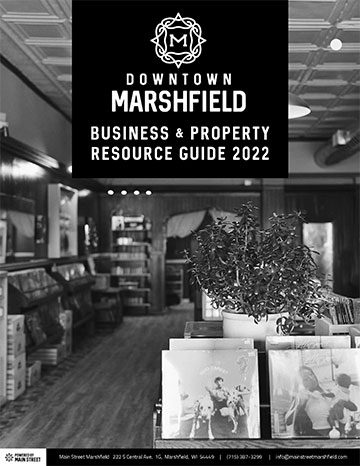
This property owner guide created by Main Street Marshfield helps owners understand the technical assistance and financial resources available in the district.
-
- Take an organized walk through your district with a group of stakeholders— and include diverse perspectives. Take notes or pictures of things that catch your eye, both in a negative and a positive way. Ask what a visitor seeing it for the first time would notice. Identify areas where there are numerous elements that detract from the downtown experience visually. Then identify the properties, uses and owners that contribute to those conditions, including public spaces and amenities.
- Survey property owners to identify shared challenges associated with owning or maintaining historic properties. Create, enhance or amend a local revolving loan or grant fund to assist with these projects. Rather than incentivizing window dressing by funding a new awning, for example, prioritize critical upgrades and maintenance such as tuckpointing or roof repairs. Future tenants or owners will be more willing to invest in making their buildings structurally sound if those items are considered eligible uses under the loan or grant guidelines.
- Update local codes that might prevent owners from undertaking certain types of repairs or cause them to leave spaces vacant. Examples might include parking minimums, use restrictions or other dated requirements that do not allow for flexibility and transition of properties to new uses.
- Dig into the history, ownership and physical condition of any properties of specific concern. Understanding past uses, what projects former owners have attempted, the relationships among individuals in the ownership group (and to the municipality), the current economics of the property and its physical condition are all critical to developing a property-specific rehabilitation plan.Lack of progress or investment may stem from personality conflicts, lack of capital, misperceptions about the cost or effort required to renovate, uncooperative lenders, or the rejection of or opposition to past plans by the municipality or adjacent owners. An underlying issue may need to be addressed before progress can be made.
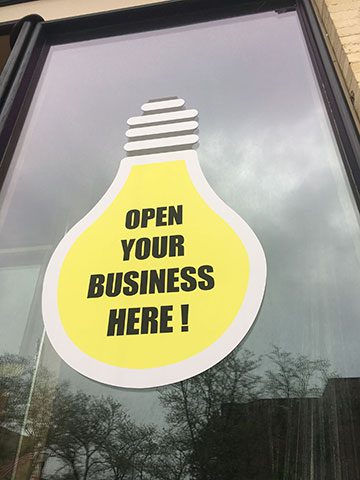
Helping property owners effectively market vacancies and consistently reaching out to prospective businesses are productive ways to fill move-in ready vacant spaces.
- Are there common aspects of vacant properties that present a challenge? Perhaps they are on side streets, possess overly large or deep floor plates, or have empty upper floors. located on upper floors. These circumstances may be a sign that regulatory or code issues may play a role in sustained vacancy and require municipal action to resolve the situation.
- If possible, compile a list of all prospective businesses that have approached the district or community about a downtown location in the past few years. What types of spaces were they looking for? What constraints or challenges prevented them from locating in the district? If there is no list of prospects, start one. This will be an invaluable marketing tool once quality spaces become available.
Taking action
Once you’ve collected background information on the district and its properties, it’s time to act.
It will take months or years to pull together the correct mix of assistance, funding and planning for any large-scale renovation. While that work is underway, other work groups should focus on encouraging immediate and visible improvements in key areas.
By capitalizing on quick, easy initiatives that improve the appearance of the district, the community can capture public attention and attract additional advocates for revitalization. That will make it easier to convince owners that improvements have community support and the potential to attract needed tenants.

This vacant gas station in Gordon, WI was seen by the community as a target for demolition, until it was painted, after which the community rallied to restore it.
Here are some tactics to help foster a vibrant downtown environment:
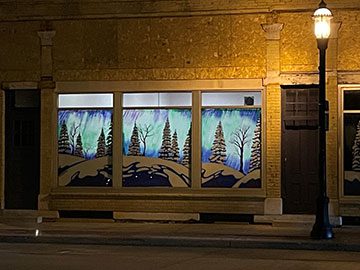
This painted storefront, illuminated at night, turns an otherwise vacant storefront into an attractive part of the pedestrian space.
-
- Create a campaign to highlight positive engagement and visual enhancements. Showcase before-and-after images of even small improvements. Identify small-scale strategies that can improve the area—such as a coat of paint, public art or plants—and begin these projects. Publicly recognize property owners that take pride and invest in their properties through highlighting renovations of the week on social media, best curb appeal award and other honors.
- Round up volunteers and skilled individuals to spruce up public and private areas suffering from deferred maintenance. Recruit a crew of helpers to clean and paint public amenities such as benches, planters, hydrants and utility boxes. Assist property owners with basic repairs and maintenance. Storefront painting, window and awning cleaning, and window decorating can provide a district-wide facelift without shaming individual property owners.
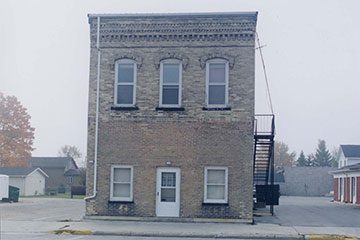
Municipal ordinances allowing storefront conversion to first floor residential spaces reduce foot traffic and vitality, and these effects can be difficult to reverse.
- Review municipal codes to determine what can and cannot be accomplished with existing tools. If necessary, amend codes to provide additional flexibility or increased control to reflect the current district condition and property constraints. In addition, audit publicly owned properties and parcels to ensure that they are well-maintained and adhere to local codes. It will be impossible to enforce ordinances if public spaces are not setting a good example.
- Establish district design guidelines to ensure that investment is done in a way that increases property values and enhances the district. Create simple one-page, easy-to-interpret guides to common repairs that clearly indicate requirements for various projects. This template can help visually communicate guideline requirements to property owners and contractors.
- If storefront vacancies are an issue and landlords are willing, try using a combination of pop-up art and pop-up business programming to enliven spaces and enhance the pedestrian experience. Having a pleasant walking environment, especially one with interesting (and, in the case of popups, time-limited) experiences, will boost foot traffic. It will also demonstrate that businesses can survive and thrive in what may have been seen as ‘cursed’ locations.
- Contact professionals experienced with historic properties and specific business operations to provide technical assistance to owners who are unsure of how to proceed. Many adaptive reuse projects may require expertise in architecture, engineering or finance that the property owners may lack; a bit of expert guidance can take a project from vision to reality. Engaging professionals to provide free or low-cost assessments, estimates or basic plans can help owners proceed with stalled projects.
- For true problem properties, fostering change may require forming a private investor fund or a nonprofit development company to acquire them, even at a premium. Individuals with a commitment to the community can pool funds to purchase and renovate key properties with an anticipated return upon a future sale.
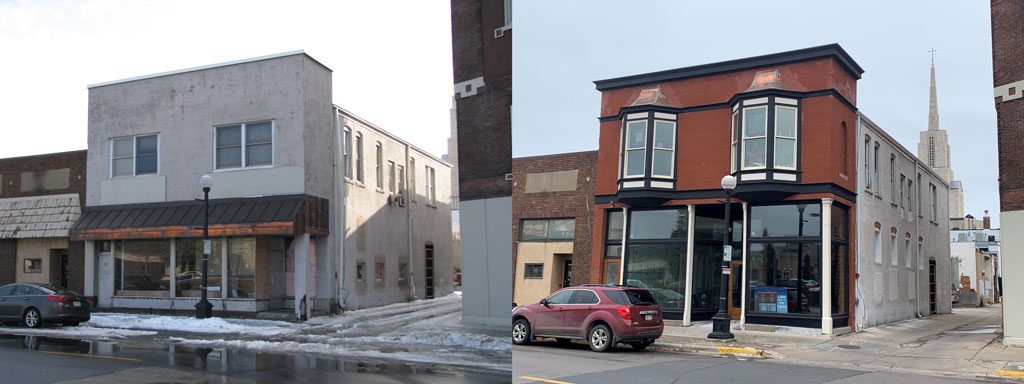
With vision and help from professionals, this La Crosse building was restored to its original glory, transforming a vacant building into an attractive mixed-use space.
By starting with short-term initiatives and building positive public sentiment, the community will start to see the district’s promise. This favorable perception can be leveraged to secure the political goodwill needed to generate public financial or regulatory support to take on more complicated projects and properties.
Preventing future problems
After a community addresses immediate concerns to make the district feel more vibrant, additional challenges still await. As demand for certain uses comes and goes, some buildings will need to transition to new uses, requiring both vision and investment on the part of the municipality and the property owners.
Just as current problem properties did not become distressed in a week or even a year, tomorrow’s problem property may be in only slight decline today. To head off future challenges, consider these tips:
- Conduct a regular business and property owner survey to uncover issues as they emerge. When a regulation, business expense or structural challenge is identified as a shared hurdle facing multiple owners in the district, the municipality or downtown organization can work to address it through advocacy, regulatory changes, tweaks to local incentive programs or joint purchasing opportunities. These issues are easier to address early before they result in business closure or disinvestment.
- Another benefit of regular property owner outreach is developing a relationship with individual owners. Keeping them engaged and informed of market trends, available technical assistance and financial tools is critical to ensuring that they will make the needed property improvements, choose quality tenants over short-term financial gain and market the property with an eye to viable future uses when they choose to sell. Keeping buildings from transitioning to absentee owners or those poorly equipped to maintain a historic structure is the best way to prevent future issues. Having an established investment fund or community ownership group is one way to ensure that property owners needing an immediate exit always have a viable local buyer.
- Promote successful renovations and transformations. Demonstrating that renovation investments have a short-term payoff is critical for sparking additional investment. If there are no property owners taking the lead, it may be necessary for a nonprofit or local investor group to complete a demonstration project to show that investment is worthwhile.
- The best long-haul strategy is a consistent, responsive effort to build relationships and provide a supportive investment environment. It’s easy to seek perfection in design or development at the expense of quality smaller projects. Don’t be overly ambitious and risk ruining relationships by pushing too hard, too fast. Take the time to find the right approach and the right messenger. Small wins add up, and visual progress generates support.
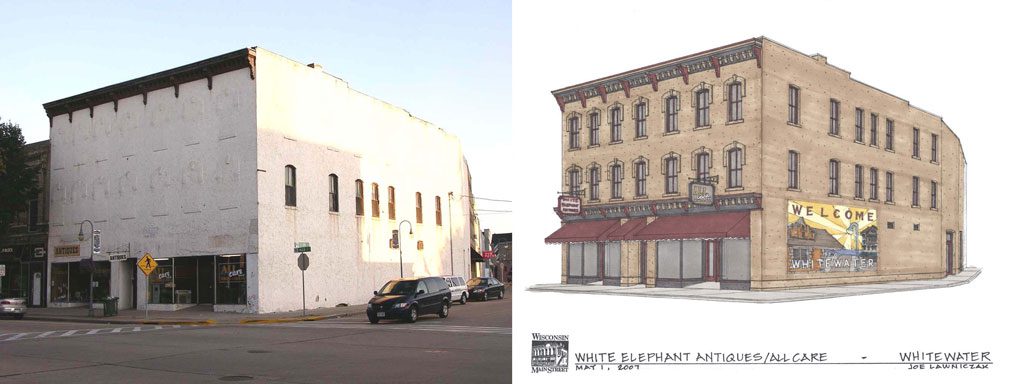
This aptly named White Elephant property in Whitewater is currently undergoing a full restoration after more than a decade of effort.
Some owners may be unwilling to respond to even the most thoughtful offers of assistance. In these situations, it’s okay to focus efforts on present-day opportunities until circumstances change.
Use existing tools to ensure that a vacant building retains its structural integrity. That will preserve the chance for a future successful renovation. After all, demolition is a permanent solution to what is ultimately the temporary problem of vacancy and disinvestment.
